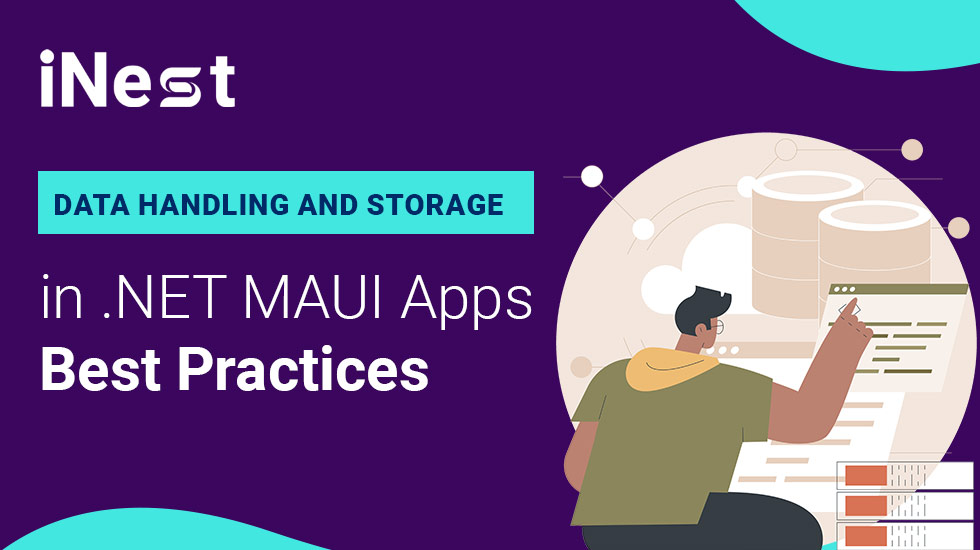In today’s digital age, mobile apps have become an integral part of our lives. Whether it’s for productivity, entertainment, or socializing, we rely on apps for various tasks. .NET MAUI (Multi-platform App UI) is a powerful framework for building cross-platform apps, allowing developers to create apps that run seamlessly on Android, iOS, and other platforms. When developing .NET MAUI apps, effective data handling and storage are crucial for a smooth user experience. In this article, we’ll explore best practices for data handling and storage in .NET MAUI apps, ensuring that your app performs efficiently and securely.
Choose the Right Data Storage Option
.NET MAUI apps often need to store and manage data, ranging from user preferences to application-specific content. Choosing the appropriate data storage option is the first step in ensuring efficient data handling. Here are some common options:
- UserDefaults (iOS) and SharedPreferences (Android)
These platform-specific APIs are suitable for storing small amounts of data, such as user settings and preferences. Use them for lightweight data that doesn’t require complex querying.
- SQLite
SQLite is a self-contained, serverless, and transactional SQL database engine. It’s well-suited for storing structured data and is a robust choice for managing app data.
- Xamarin Essentials Preferences
Xamarin Essentials provides a cross-platform way to store key-value pairs for your app. It’s a good choice for simple data storage, such as user preferences and settings.
- Cloud-Based Storage
If your app requires remote data storage and synchronization, consider cloud-based solutions like Azure Storage, Firebase Realtime Database, or AWS S3.
The choice of storage depends on your app’s requirements. For complex data structures and queries, SQLite is often the best choice, while User Defaults and Shared Preferences are suitable for lightweight storage.
Implement Data Access Layer (DAL)
To maintain a clean and organized codebase, it’s essential to implement a Data Access Layer (DAL). The DAL abstracts the underlying data storage, making it easier to switch between different storage options without affecting the rest of the application. It also promotes code reusability.
Asynchronous Data Operations
In .NET MAUI apps, data operations should be performed asynchronously to prevent blocking the UI thread. This ensures a responsive user interface, even when dealing with large datasets or slow network requests. Utilize async and await keywords when working with data operations.
Secure Data Storage
Security is a top priority when handling user data. When dealing with sensitive information, such as user credentials or personal data, follow these best practices:
- Encryption: Encrypt sensitive data before storing it. .NET MAUI provides libraries like Xamarin. Essentials Secure Storage for securely storing sensitive information.
- Secure Communication: Ensure that data transmitted between your app and a server is done securely using HTTPS. Always validate SSL certificates to prevent man-in-the-middle attacks.
- Authentication and Authorization: Implement proper authentication and authorization mechanisms to restrict access to sensitive data. Use OAuth or JWT for secure user authentication
Data Caching and Offline Support
.NET MAUI apps should be able to handle scenarios where the device is offline or has a poor internet connection. Implement data caching strategies to store previously fetched data locally. This allows the app to provide a seamless user experience even without a network connection. Consider using libraries like Akavache or MonkeyCache to simplify data caching in your app.
Data Synchronization
For apps that rely on remote data sources, data synchronization becomes critical. Implement synchronization mechanisms to keep local and remote data in sync. This involves handling conflicts and managing data updates intelligently.
Proper Error Handling
Effective error handling is crucial for a robust app. Ensure that your app gracefully handles errors, providing clear and user-friendly error messages. Log errors for debugging purposes but avoid exposing sensitive information to end-users.
Testing and Optimization
Thoroughly test your data handling and storage components. Use unit testing to validate the behaviour of your DAL and data retrieval methods. Profile your app to identify performance bottlenecks and optimize data access for improved responsiveness.
User Data Privacy
Respect user data privacy by adhering to data protection regulations like GDPR or CCPA. Clearly communicate your app’s data collection and usage policies to users and obtain their consent when required.
Regular Updates and Maintenance
Finally, remember that data handling and storage are not static aspects of your app. As your app evolves, revisit and update your data management strategies to accommodate new features and changing requirements. Regular maintenance ensures that your app remains secure and efficient.
In conclusion, data handling and storage are fundamental aspects of building .NET MAUI apps. By choosing the right storage option, implementing a Data Access Layer, handling data asynchronously, ensuring security, and following best practices, you can create a reliable and user-friendly app. Remember to prioritize user data privacy and stay vigilant in keeping your app up-to-date and well-maintained. Following these best practices will set you on the path to developing successful .NET MAUI apps that users can trust and enjoy.

